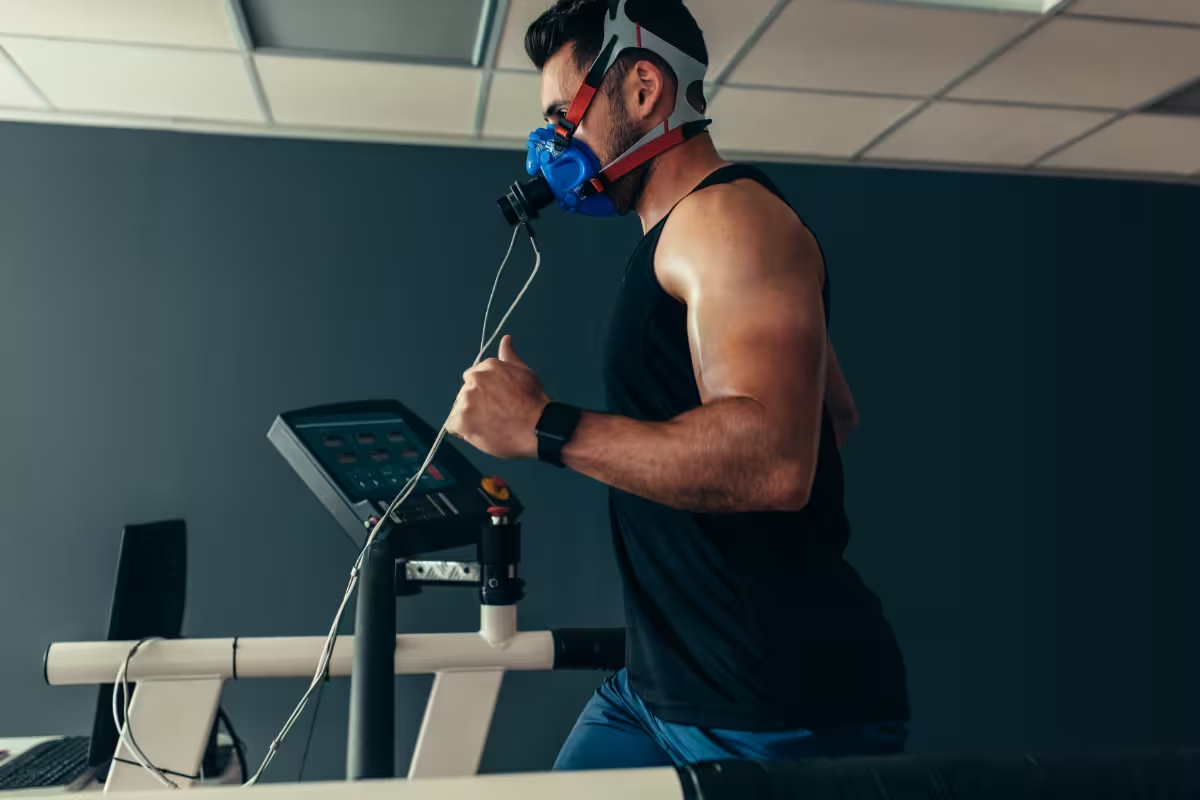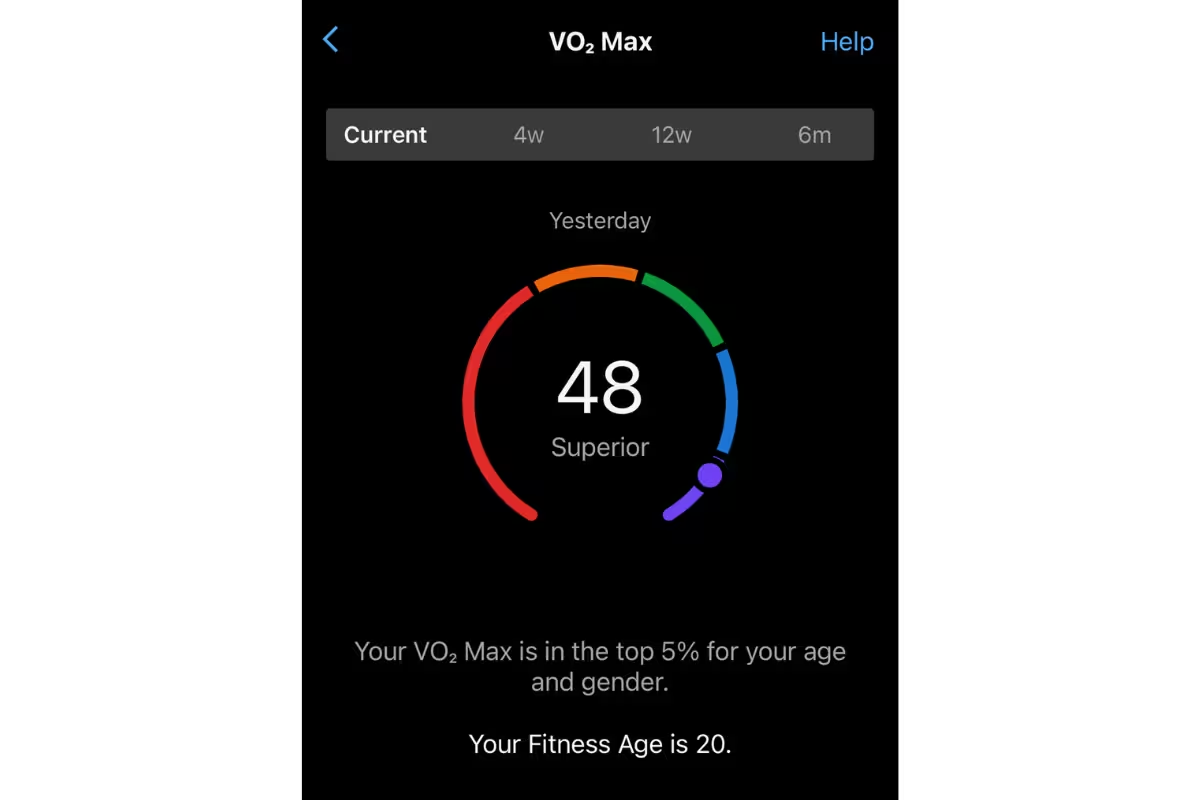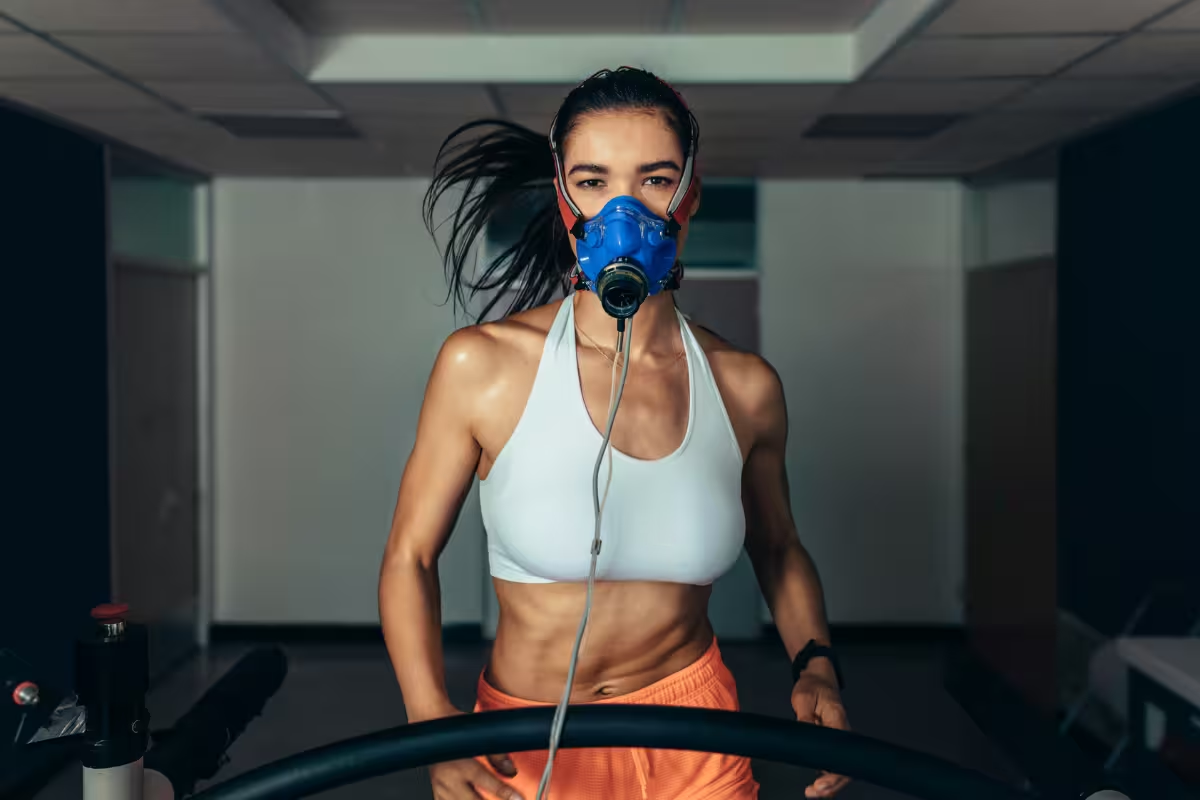10 Tips to Improve VO2 Max for Runners
Introduction
VO2 max is a critical measure for runners looking to enhance their endurance and performance. It represents the maximum amount of oxygen your body can use during intense exercise, and improving it can lead to significant gains in your running efficiency and speed. In this post, we'll explore what VO2 max is, why it matters, and how runners can improve it through training and lifestyle adjustments.

What is VO2 Max?
VO2 max, or maximal oxygen uptake, is the highest amount of oxygen that can be used at the cellular level for the entire body.
Simply put, it shows how much oxygen a person's body can transport and use for energy during exercise at their maximum effort.
V stands for volume, O2 stands for oxygen, and max refers to the maximum effort.
As your fitness improves, your body gets better at using more of the inhaled oxygen to produce energy and then your VO2 Max level increases.
It is typically measured in milliliters of oxygen consumed in one minute, per kilogram of body weight (ml/kg/min).
This metric is an excellent indicator of cardiovascular fitness and aerobic endurance.
Why is VO2 Max Important for Runners?
For runners, a higher VO2 max can translate to improved performance because it means the body can take in and use more of the oxygen you inhale during high-intensity exercise. This leads to better endurance, speed, and overall efficiency. Understanding and improving VO2 max can give runners a significant edge in training and competition.
How to Measure VO2 Max
Laboratory Testing
The most accurate way to measure VO2 max is through a laboratory test involving a graded exercise test on a treadmill or cycle ergometer, with respiratory gas analysis. This test is often conducted by sports scientists or in medical facilities.
Field Testing
Field tests, such as the Cooper Test or the Beep Test, offer more accessible ways to estimate VO2 max. These tests involve running at a constant pace or incrementally increasing pace until exhaustion.
Wearable Technology
Modern wearable devices, like advanced fitness watches, can estimate VO2 max by analyzing heart rate data and exercise intensity. While not as precise as lab tests, these devices provide valuable insights for everyday training.

Factors Influencing VO2 Max
Several factors can influence your VO2 max, including genetics, age, gender, altitude, and training status.
While some of these factors are beyond your control, targeted training and lifestyle changes can significantly enhance your VO2 max.
Genetics: VO2 Max increases as you improve your fitness but the absolute limit of one's potential VO2 max is largely controlled by genetics.
Age: A person's VO2 max drops by 5-15% every decade after age 30. The good news is that older adults can increase their VO2 max just as
effectively as younger adults with aerobic exercise. In fact, older adults can boost their VO2 max by 10-30% through regular aerobic activity.
Gender: Generally, men tend to have higher VO2 max values than women. This difference is largely due to physiological factors such as
greater muscle mass, higher hemoglobin levels, and larger heart and lung capacities in men, which increases oxygen transport and affects how it is used.
However, women can still achieve high VO2 max levels with dedicated training and can improve their aerobic capacity similarly to men.
Altitude: Altitude significantly affects VO2 max because higher elevations have lower oxygen levels. This decrease in oxygen availability
makes it harder for the body to transport and use oxygen, resulting in a lower VO2 max. However, training at high altitudes can stimulate the production of
red blood cells, improving oxygen delivery and potentially boosting VO2 max when returning to lower altitudes.
Training: Training is one of the most influential factors affecting VO2 max. Regular aerobic training, especially high-intensity workouts,
can significantly increase VO2 max by enhancing cardiovascular efficiency and the body's ability to use oxygen for energy.
Training Techniques to Improve VO2 Max
High-Intensity Interval Training (HIIT)
HIIT involves short bursts of intense exercise followed by recovery periods. This type of training can significantly
boost VO2 max by improving cardiovascular and muscular efficiency.
During HIIT, the heart works at near-maximal capacity, which increases the overall cardiac output. Additionally,
HIIT enhances the oxidative capacity of muscle fibers, allowing them to use oxygen more efficiently.
Common HIIT workouts for runners include sprints, hill repeats, and interval runs, where you alternate between
high-intensity efforts and slower recovery periods.
Long, Steady Distance Runs
Steady-state aerobic runs at a moderate intensity help build endurance and improve the body's ability to utilize oxygen
efficiently. These runs typically last between 60 to 120 minutes and are done at a conversational pace.
Long runs increase the capillary density in muscles, which enhances oxygen delivery. They also improve mitochondrial function,
enabling better oxygen use at the cellular level.
Including one or two long runs into your weekly training routine can significantly boost your aerobic base and, consequently, your VO2 max.
Tempo Runs
Tempo runs are sustained efforts at a challenging but manageable pace, often referred to as "comfortably hard."
These runs are typically performed at or slightly below your lactate threshold — the point at which lactate begins
to accumulate in the blood.
Tempo runs improve the body's ability to clear lactate, allowing you to maintain higher intensities for longer periods. They also
improve the efficiency of oxygen usage in your muscles.
A typical tempo run might consist of a 10-15 minute warm-up, 20-40 minutes at tempo pace, and a 10-15 minute cool-down.

Nutrition and VO2 Max
Balanced Diet
A balanced diet rich in carbohydrates, proteins, and fats is crucial for maintaining energy levels and supporting intense training.
Carbohydrates are the primary energy source for high-intensity exercise, providing the necessary fuel for your muscles.
Proteins are essential for muscle repair and recovery, helping to rebuild and strengthen muscle fibers after strenuous workouts.
Fats, especially healthy fats like those from avocados, nuts, and fish, provide a longer-lasting energy source and support overall health.
By including a variety of fruits, vegetables, whole grains, lean proteins, and healthy fats in your diet, you get the necessary vitamins and minerals to optimize performance and recovery.
Hydration
Staying properly hydrated is essential for optimal cardiovascular function and endurance performance. Dehydration can impair your body's ability to transport oxygen to working muscles, reducing VO2 max and overall performance.
Drinking enough water throughout the day, especially before, during, and after workouts, helps maintain blood volume, regulate body temperature, and prevent fatigue.
For longer training sessions, adding electrolyte-rich beverages can help replenish lost minerals and maintain fluid balance. Monitoring urine color and ensuring it is light yellow is a practical way to gauge your hydration status.
Supplementation
Certain supplements have been shown to improve oxygen utilization and endurance performance, potentially enhancing VO2 max.
Beetroot juice, rich in nitrates, can increase nitric oxide production in the body, leading to improved blood flow and oxygen delivery to muscles.
Caffeine is another supplement that can boost endurance by increasing focus and reducing the perception of effort, making you able to train harder and longer.
Additionally, iron supplements can be beneficial, especially for those with low iron levels, as iron is critical for the production of hemoglobin, which carries
oxygen in the blood. However, it's important to consult with a healthcare professional before starting any supplementation to ensure it's safe and appropriate for your needs.
Recovery and VO2 Max
Rest Days
Including rest days into your training schedule is important for recovery and preventing overtraining, which can hinder VO2 max improvements.
Rest days allow your muscles, joints, and connective tissues to repair and strengthen, reducing the risk of injury.
They also help prevent mental burnout, keeping you motivated and focused on your training goals.
Without adequate rest, your body cannot fully recover, which can lead to decreased performance and plateauing of VO2 max gains.
Plan at least one to two rest days per week, depending on your training intensity and volume, to optimize your overall fitness and VO2 max.
Sleep
Quality sleep is crucial for recovery and overall performance. Aim for 7-9 hours of sleep per night to support your training and VO2 max goals.
During sleep, the body undergoes critical repair processes, including muscle tissue repair, hormone regulation, and memory consolidation.
Adequate sleep helps improve cognitive function, mood, and energy levels, all of which are essential for effective training.
Poor sleep can impair recovery, reduce training effectiveness, and negatively impact VO2 max. Establishing a regular sleep routine,
creating a restful sleep environment, and minimizing screen time before bed can help improve sleep quality.
Active Recovery
Engaging in low-intensity activities on rest days can help promote blood flow and recovery without adding stress on the body.
Activities such as walking, light cycling, yoga, or stretching can enhance circulation, reduce muscle stiffness, and facilitate the removal
of metabolic waste products from your muscles. Active recovery helps maintain flexibility and mobility, which are important for preventing
injuries and improving overall performance.
Including active recovery into your routine can also keep you mentally engaged and motivated, providing a balanced approach to training and recovery.

FAQs
What is a good VO2 max for runners?
A good VO2 max varies by age, gender, and fitness level. For recreational runners, a VO2 max of around 40-50 ml/kg/min is typical, while elite runners can have VO2 max values above 70 ml/kg/min.
How often should I test my VO2 max?
Testing your VO2 max every 2-3 months can provide insights into your training progress and help adjust your training plan accordingly.
Can I improve my VO2 max through diet alone?
While diet plays a supportive role, improving VO2 max primarily requires targeted training interventions.
Does altitude training affect VO2 max?
Yes, training at high altitudes can enhance VO2 max by stimulating red blood cell production, improving oxygen delivery to muscles.
Are there any risks associated with high-intensity interval training?
HIIT can be demanding and may increase the risk of injury if not done properly. It’s important to follow a well-structured plan and listen to your body.
Can beginners improve their VO2 max?
Absolutely! Beginners can see significant improvements in VO2 max with consistent and appropriate training.
Conclusion
Improving your VO2 max can lead to substantial gains in running performance, endurance, and overall fitness. By incorporating structured training, proper nutrition, and adequate recovery into your routine, you can optimize your VO2 max and reach your running goals. Start implementing these tips today and experience the benefits of a higher VO2 max on your running journey.